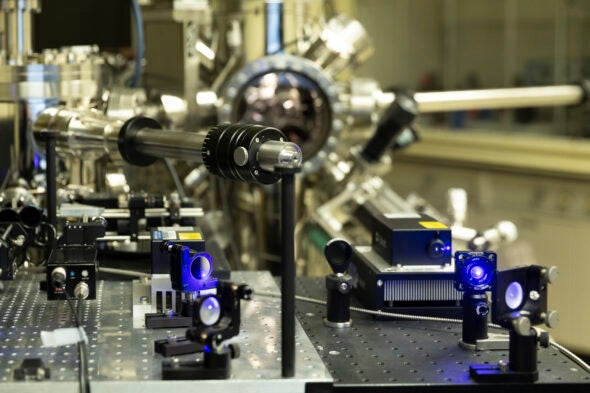Studying new 2D materials, one molecule at a time

University of Illinois Chicago scientists have created a new platform to examine innovative materials at the level of individual molecules. The approach is a significant breakthrough for creating nanotechnologies that could revolutionize computing, energy and other fields.
Two-dimensional materials, such as graphene, are made from a single layer of atoms. This allows them to be used in sensors, electronics and energy-storage devices. But studying and designing these ultrathin materials requires highly specialized methods.
The laboratory of Nan Jiang, associate professor of chemistry and physics at UIC, pioneered a new method to simultaneously examine the structural, electronic and chemical properties of these nanomaterials. The platform combines two scientific approaches — scanning probe microscopy and optical spectroscopy — to view materials and assess how they interact with chemicals.

In a new paper for the journal Chem, a team led by postdoctoral researcher Linfei Li described the method and its use in materials design.
The scientists used their method to watch how borophene, a synthetic 2D material made from a single layer of boron atoms, reacted when treated with chemicals called carbenes. Because the resolution of their method is smaller than 1 nanometer — 1,000,000 times smaller than a millimeter — they could see how individual carbene molecules interacted with the borophene layer during this process.
The experiments captured chemical, physical and geometric changes at the single-molecule scale that will help scientists precisely design future technologies using two-dimensional materials, the researchers said.
“This is the first time we are able, on a single-molecule level, to look at functionalization of borophene with these particular chemicals and get the most fundamental properties of the material,” Jiang said. “This can pave the way to innovative applications in nanotechnology.”
